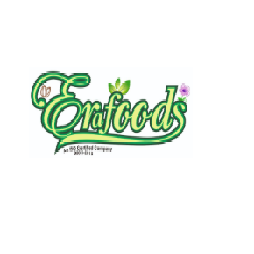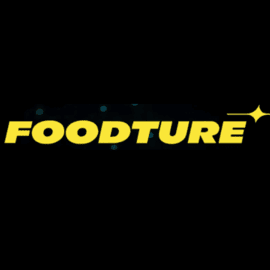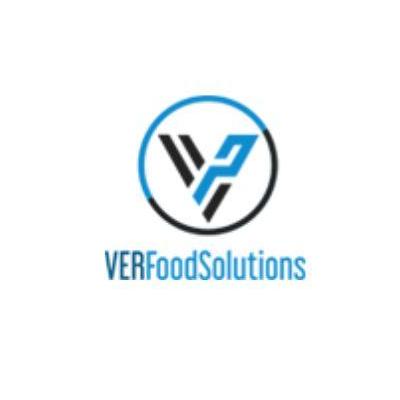Beyond the Heart: The Broad Spectrum of Electrophysiology in Medicine
When we hear the term Electrophysiology (EP), our minds often immediately jump to the heart. Indeed, cardiac electrophysiology is its most prominent and rapidly evolving application. However, the fundamental principles of electrophysiology – the study of electrical properties of biological cells and tissues – extend far beyond the cardiovascular system, impacting various other branches of medicine.
From diagnosing brain disorders to assessing muscle function, EP provides invaluable insights into the body's electrical symphony.
1. Neuro-Electrophysiology: Unraveling Brain and Nerve Activity
The nervous system is an incredibly complex electrical network, and neuro-electrophysiology is dedicated to understanding its signals.
Electroencephalography (EEG): This non-invasive test measures electrical activity in the brain. It's crucial for diagnosing:
Epilepsy: Identifying abnormal brainwave patterns during seizures.
Sleep Disorders: Analyzing brain activity during sleep stages (e.g., in polysomnography).
Brain Tumors, Stroke, and Encephalopathies: Detecting generalized or localized brain dysfunction.
Electromyography (EMG) and Nerve Conduction Studies (NCS): These tests assess the electrical activity of muscles and the nerves that control them.
EMG: Measures muscle response or electrical activity in response to a nerve's stimulation of the muscle. Used to diagnose nerve damage, muscle disorders (e.g., muscular dystrophy), or conditions affecting the connection between nerves and muscles (e.g., myasthenia gravis).
NCS: Measures how fast and how well the body's electrical signals travel along a nerve. Used to diagnose nerve damage (neuropathy) like carpal tunnel syndrome, sciatica, or Guillain-Barré syndrome.
Evoked Potentials (EPs): These tests measure the electrical activity of the brain or spinal cord in response to specific sensory stimulation (visual, auditory, somatosensory). They can detect problems in nerve pathways that may not be apparent on other tests.
Visual Evoked Potentials (VEP): For optic nerve diseases like multiple sclerosis.
Brainstem Auditory Evoked Potentials (BAEP): For hearing problems or brainstem lesions.
Somatosensory Evoked Potentials (SSEP): For spinal cord or peripheral nerve issues.
2. Ophthalmic Electrophysiology: Vision's Electrical Signals
The eye, a complex sensory organ, also relies on electrical signals for vision.
Electroretinography (ERG): Measures the electrical responses of various cell types in the retina (light-sensitive layer at the back of the eye) to a light stimulus. Used to diagnose inherited retinal diseases (e.g., retinitis pigmentosa), retinal detachments, or drug toxicity affecting the retina.
Electrooculography (EOG): Measures the standing potential across the retinal pigment epithelium, a layer supporting the photoreceptors. Used to diagnose certain inherited macular degenerations.
3. Otologic Electrophysiology: Hearing's Electrical Pathway
The ear converts sound waves into electrical signals sent to the brain.
Auditory Brainstem Response (ABR): Measures how the inner ear and brain respond to sound. Crucial for diagnosing hearing loss in infants and young children, or identifying brainstem lesions.
Electrocochleography (ECoG): Measures the electrical potentials generated by the inner ear (cochlea) and auditory nerve in response to sound. Used to diagnose Meniere's disease or other inner ear disorders.
4. Uro-Electrophysiology: Bladder and Pelvic Floor Function
Even the urinary system has an electrical component, particularly for controlling bladder function.
Electromyography (EMG of Pelvic Floor): Used in urodynamic studies to assess the electrical activity of muscles controlling urination and bowel movements. Helps diagnose nerve damage or muscle dysfunction contributing to incontinence or retention.
5. Gastrointestinal Electrophysiology: The Gut's Own Rhythm
The digestive tract also has inherent electrical activity that coordinates muscle contractions for food movement.
Electro-gastrography (EGG): Measures the electrical activity of the stomach muscles. Used to investigate unexplained nausea, vomiting, or gastroparesis (delayed stomach emptying).
From the pulsating rhythm of the heart to the fleeting thoughts of the brain, the subtle contractions of muscles, and the intricate sensory inputs from our eyes and ears, electrical signals underpin almost all bodily functions.
Electrophysiology, in its various forms, provides a unique window into these vital processes, allowing clinicians to diagnose complex disorders and guide targeted therapies that truly tune the body's electrical symphony back to harmony.
When we hear the term Electrophysiology (EP), our minds often immediately jump to the heart. Indeed, cardiac electrophysiology is its most prominent and rapidly evolving application. However, the fundamental principles of electrophysiology – the study of electrical properties of biological cells and tissues – extend far beyond the cardiovascular system, impacting various other branches of medicine.
From diagnosing brain disorders to assessing muscle function, EP provides invaluable insights into the body's electrical symphony.
1. Neuro-Electrophysiology: Unraveling Brain and Nerve Activity
The nervous system is an incredibly complex electrical network, and neuro-electrophysiology is dedicated to understanding its signals.
Electroencephalography (EEG): This non-invasive test measures electrical activity in the brain. It's crucial for diagnosing:
Epilepsy: Identifying abnormal brainwave patterns during seizures.
Sleep Disorders: Analyzing brain activity during sleep stages (e.g., in polysomnography).
Brain Tumors, Stroke, and Encephalopathies: Detecting generalized or localized brain dysfunction.
Electromyography (EMG) and Nerve Conduction Studies (NCS): These tests assess the electrical activity of muscles and the nerves that control them.
EMG: Measures muscle response or electrical activity in response to a nerve's stimulation of the muscle. Used to diagnose nerve damage, muscle disorders (e.g., muscular dystrophy), or conditions affecting the connection between nerves and muscles (e.g., myasthenia gravis).
NCS: Measures how fast and how well the body's electrical signals travel along a nerve. Used to diagnose nerve damage (neuropathy) like carpal tunnel syndrome, sciatica, or Guillain-Barré syndrome.
Evoked Potentials (EPs): These tests measure the electrical activity of the brain or spinal cord in response to specific sensory stimulation (visual, auditory, somatosensory). They can detect problems in nerve pathways that may not be apparent on other tests.
Visual Evoked Potentials (VEP): For optic nerve diseases like multiple sclerosis.
Brainstem Auditory Evoked Potentials (BAEP): For hearing problems or brainstem lesions.
Somatosensory Evoked Potentials (SSEP): For spinal cord or peripheral nerve issues.
2. Ophthalmic Electrophysiology: Vision's Electrical Signals
The eye, a complex sensory organ, also relies on electrical signals for vision.
Electroretinography (ERG): Measures the electrical responses of various cell types in the retina (light-sensitive layer at the back of the eye) to a light stimulus. Used to diagnose inherited retinal diseases (e.g., retinitis pigmentosa), retinal detachments, or drug toxicity affecting the retina.
Electrooculography (EOG): Measures the standing potential across the retinal pigment epithelium, a layer supporting the photoreceptors. Used to diagnose certain inherited macular degenerations.
3. Otologic Electrophysiology: Hearing's Electrical Pathway
The ear converts sound waves into electrical signals sent to the brain.
Auditory Brainstem Response (ABR): Measures how the inner ear and brain respond to sound. Crucial for diagnosing hearing loss in infants and young children, or identifying brainstem lesions.
Electrocochleography (ECoG): Measures the electrical potentials generated by the inner ear (cochlea) and auditory nerve in response to sound. Used to diagnose Meniere's disease or other inner ear disorders.
4. Uro-Electrophysiology: Bladder and Pelvic Floor Function
Even the urinary system has an electrical component, particularly for controlling bladder function.
Electromyography (EMG of Pelvic Floor): Used in urodynamic studies to assess the electrical activity of muscles controlling urination and bowel movements. Helps diagnose nerve damage or muscle dysfunction contributing to incontinence or retention.
5. Gastrointestinal Electrophysiology: The Gut's Own Rhythm
The digestive tract also has inherent electrical activity that coordinates muscle contractions for food movement.
Electro-gastrography (EGG): Measures the electrical activity of the stomach muscles. Used to investigate unexplained nausea, vomiting, or gastroparesis (delayed stomach emptying).
From the pulsating rhythm of the heart to the fleeting thoughts of the brain, the subtle contractions of muscles, and the intricate sensory inputs from our eyes and ears, electrical signals underpin almost all bodily functions.
Electrophysiology, in its various forms, provides a unique window into these vital processes, allowing clinicians to diagnose complex disorders and guide targeted therapies that truly tune the body's electrical symphony back to harmony.
Beyond the Heart: The Broad Spectrum of Electrophysiology in Medicine
When we hear the term Electrophysiology (EP), our minds often immediately jump to the heart. Indeed, cardiac electrophysiology is its most prominent and rapidly evolving application. However, the fundamental principles of electrophysiology – the study of electrical properties of biological cells and tissues – extend far beyond the cardiovascular system, impacting various other branches of medicine.
From diagnosing brain disorders to assessing muscle function, EP provides invaluable insights into the body's electrical symphony.
1. Neuro-Electrophysiology: Unraveling Brain and Nerve Activity
The nervous system is an incredibly complex electrical network, and neuro-electrophysiology is dedicated to understanding its signals.
Electroencephalography (EEG): This non-invasive test measures electrical activity in the brain. It's crucial for diagnosing:
Epilepsy: Identifying abnormal brainwave patterns during seizures.
Sleep Disorders: Analyzing brain activity during sleep stages (e.g., in polysomnography).
Brain Tumors, Stroke, and Encephalopathies: Detecting generalized or localized brain dysfunction.
Electromyography (EMG) and Nerve Conduction Studies (NCS): These tests assess the electrical activity of muscles and the nerves that control them.
EMG: Measures muscle response or electrical activity in response to a nerve's stimulation of the muscle. Used to diagnose nerve damage, muscle disorders (e.g., muscular dystrophy), or conditions affecting the connection between nerves and muscles (e.g., myasthenia gravis).
NCS: Measures how fast and how well the body's electrical signals travel along a nerve. Used to diagnose nerve damage (neuropathy) like carpal tunnel syndrome, sciatica, or Guillain-Barré syndrome.
Evoked Potentials (EPs): These tests measure the electrical activity of the brain or spinal cord in response to specific sensory stimulation (visual, auditory, somatosensory). They can detect problems in nerve pathways that may not be apparent on other tests.
Visual Evoked Potentials (VEP): For optic nerve diseases like multiple sclerosis.
Brainstem Auditory Evoked Potentials (BAEP): For hearing problems or brainstem lesions.
Somatosensory Evoked Potentials (SSEP): For spinal cord or peripheral nerve issues.
2. Ophthalmic Electrophysiology: Vision's Electrical Signals
The eye, a complex sensory organ, also relies on electrical signals for vision.
Electroretinography (ERG): Measures the electrical responses of various cell types in the retina (light-sensitive layer at the back of the eye) to a light stimulus. Used to diagnose inherited retinal diseases (e.g., retinitis pigmentosa), retinal detachments, or drug toxicity affecting the retina.
Electrooculography (EOG): Measures the standing potential across the retinal pigment epithelium, a layer supporting the photoreceptors. Used to diagnose certain inherited macular degenerations.
3. Otologic Electrophysiology: Hearing's Electrical Pathway
The ear converts sound waves into electrical signals sent to the brain.
Auditory Brainstem Response (ABR): Measures how the inner ear and brain respond to sound. Crucial for diagnosing hearing loss in infants and young children, or identifying brainstem lesions.
Electrocochleography (ECoG): Measures the electrical potentials generated by the inner ear (cochlea) and auditory nerve in response to sound. Used to diagnose Meniere's disease or other inner ear disorders.
4. Uro-Electrophysiology: Bladder and Pelvic Floor Function
Even the urinary system has an electrical component, particularly for controlling bladder function.
Electromyography (EMG of Pelvic Floor): Used in urodynamic studies to assess the electrical activity of muscles controlling urination and bowel movements. Helps diagnose nerve damage or muscle dysfunction contributing to incontinence or retention.
5. Gastrointestinal Electrophysiology: The Gut's Own Rhythm
The digestive tract also has inherent electrical activity that coordinates muscle contractions for food movement.
Electro-gastrography (EGG): Measures the electrical activity of the stomach muscles. Used to investigate unexplained nausea, vomiting, or gastroparesis (delayed stomach emptying).
From the pulsating rhythm of the heart to the fleeting thoughts of the brain, the subtle contractions of muscles, and the intricate sensory inputs from our eyes and ears, electrical signals underpin almost all bodily functions.
Electrophysiology, in its various forms, provides a unique window into these vital processes, allowing clinicians to diagnose complex disorders and guide targeted therapies that truly tune the body's electrical symphony back to harmony.
0 Comments
0 Shares






